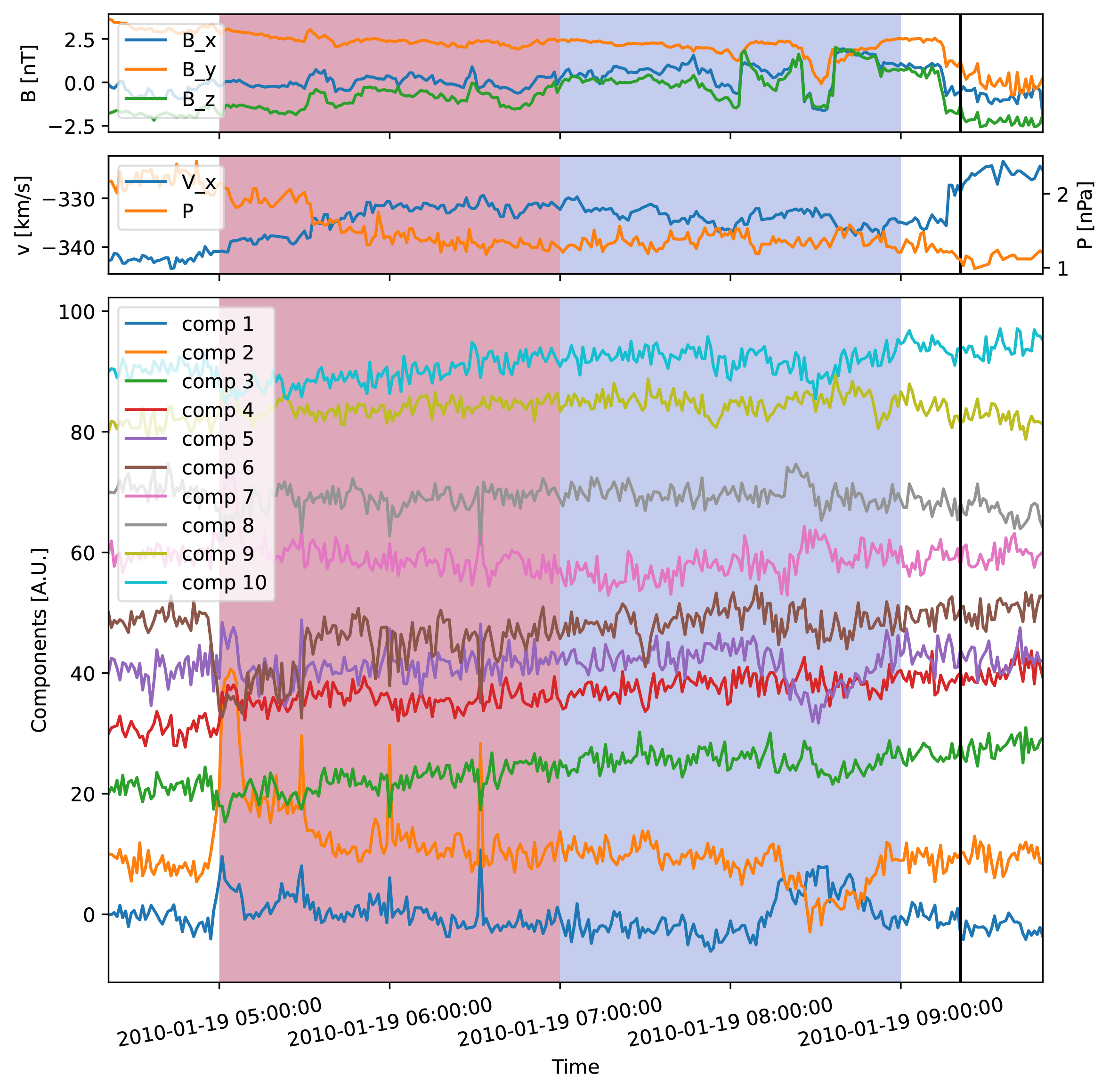
2023 THEMIS SCIENCE NUGGETS
Substorm Onset Prediction Using Machine Learning Classified Auroral Images
Pascal Sado
Space Physics, University of Oslo, Norway
Introduction
Geomagnetic Substorms are driven by the solar wind and are a cause of space weather events. Forecasting substorms can help us with understanding their trigger mechanism as well as mitigate any negative effects they may have on our infrastructure. Attempts to forecast have been done on a local level based purely on images (Sado et al., 2022) as well as on a global level based on solar wind and interplanetary magnetic field (IMF) measurements (Maimaiti et al., 2019) . We attempt train a neural network based on both methods in an effort to improve the precision as localized magnetic substorm forecasting (LOCATE) and reproduce the results of the global forecasting method in the process.
Results
We merge data from the OMNI database (Papitashvili et al., 2014 and Papitashvili and King, 2020) for solar wind and IMF measurements with image data taken by the THEMIS all sky imager in Gillam. The solar wind and IMF data are interpolated for up to 11 minutes when necessary to reduce the amount of holes in the data. Images' features are extracted by a neural network and reduced to 10 numerical image features using principal component analysis. This allows for fast and efficient machine-based analysis of the images. Information on when and where a substorm occurs is provided by the SuperMAG list of substorms (P. T. Newell and Gjerloev, 2011). Our neural network will be given 2 hours of information for its forecast and predict whether a substorm will occur within a 1 hour interval.
| Figure 1. Demonstration of how a sequence of data passed into the neural network looks like. The top panel shows the IMF values, the second panel the Solar wind pressure and speed and the last panel the ten most prominent features extracted by PCA. For easy demonstration they have been offset vertically by a constant value of 10 between each feature. The vertical black line denotes a substorm occurrence. The blue shaded area is followed by a substorm and will be labeled ”True”, the red shaded area is too far before the substorm and will be labelled ”False”. |
Ultimately our model fails to perform to the necessary precision required for scientific purposes.
| Figure 2. Two keograms with IMF Bz and Vx plotted underneath. The third panel shows the models prediction with probability, the black line denotes the necessary threshold of 50% for the prediction. The bottom panel shows the true label for each point in time. These times were selected for demonstration for their continuous coverage. |
On the left figure we can see that there is a positive prediction when no substorm will occur, on the right the substorm is not identified with the necessary precision and there is a large gap in the prediction because of missing input data. We were able to reproduce the global substorm forecasting with our model architecture, so we attribute the failure mostly to a lack of training data, not our model's architecture. We estimate that we would need almost 100 times more training data than what is available to us now, something which cannot easily be acquire due to the nature of the data.
Conclusion
Substorm forecasting remains difficult on a localized level due to a lack of training data, but we confirmed global forecasting to be a viable approach. Model and data are freely available for use and reproduction.
References
Pascal Sado, Lasse Boy Novock Clausen, Wojciech Jacek Miloch, Hannes Nickisch, Localized Magnetic Substorm Forecasting using Machine Learning. ESS Open Archive . May 13, 2023. DOI: 10.22541/essoar.168394730.08937615/v1 Sado, P., Clausen, L. B. N., Miloch, W. J., and Nickisch, H. (2023). Substorm onset prediction using machine learning classified auroral images. Space Weather, 21, e2022SW003300. https://doi.org/10.1029/2022SW003300Maimaiti, M., Kunduri, B., Ruohoniemi, J. M., Baker, J. B. H., and House, L. L. (2019). A deep learning-based approach to forecast the onset of magnetic substorms. Space WeatherSpace Weather, 17, 1534– 1552. https://doi.org/10.1029/2019SW002251
Papitashvili, N., Bilitza, D., and King, J. (2014). OMNI: a description of near-Earth solar wind environment. 40th COSPAR scientific assembly, 40, C0-1. Papitashvili, N. E., and King, J. H. (2020). Omni 1-min data set [data set]. Accessed on 2023-April-17. Retrieved from https://doi.org/10.48322/45bb-8792443 doi: 10.48322/45bb-8792
Newell, P. T., and Gjerloev, J. W. (2011). Evaluation of supermag auroral electrojet indices as indicators of substorms and auroral power. Journal of Geophysical Research: Space Physics, 116 (A12). Retrieved from https://agupubs.onlinelibrary.wiley.com/doi/abs/10.1029/2011JA016779 doi: https://doi.org/10.1029/2011JA016779
Biographical Note
Pascal Sado is a PhD student in Space Physics at the University of Oslo. He is working on aurora image classification and substorm forecasting.
 Please send comments/suggestions to
Emmanuel Masongsong / emasongsong @ igpp.ucla.edu
Please send comments/suggestions to
Emmanuel Masongsong / emasongsong @ igpp.ucla.edu


